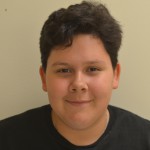Indian Trail National Honor Society students hosted a blood drive with the Blood Center of Kenosha last month, drawing more than 100 donors to the event. Students started to arrive in the upper gym around 8 a.m with their schedule cards and either state or student IDs.
“We had about 120 students sign up to donate blood,” said Benjamin Lutz, a General Studies senior and NHS president.
Kenosha Unified School District and the Blood Center of Kenosha are partners when any of the high schools schedule a blood drive.
“Today we are projected at 158. Hopefully we hit our goal,” said a Blood Center physician.
Every school collects a different amount of donated blood. Over the years, students have traditionally turned out in large numbers, but some students do get turned away for such reasons as low iron levels or not meeting height and weight requirements, which results in too low of a blood volume. The Blood Center still encourages those students to keep on trying to give each year.
“Sometimes we do three drives a week, sometimes more than that, sometimes less. It all depends on the week of the blood drive,” said another Blood Center physician.
Blood donations are received not just at the schools but also at the Blood Center administration building, but the Blood Center believes that the school blood drives are better than a normal day at the building.
“This is my second time donating, and I donate because it helps the patients who need the blood, plus I’m O negative, a universal donor,” said Isaac Collins, a General Studies sophomore.
At about 8 a.m. students were upstairs giving red blood cells or double red blood cells, platelets, and even plasma.
“Nearly 7,000 units of platelets and 10,000 units of plasma are needed daily in the U.S.,” according to the American Red Cross.
In America, the most common blood type that blood centers and hospitals are looking for is Type O negative blood. Type O negative is a universal blood type for red blood cells, which means it is compatible with any other blood type. The most common blood type anywhere is O positive. The center and hospitals that hold their own blood drives receive type A positive more than any other blood types.
“If you began donating blood at age 17 and donated every 56 days until you reached 76, you would have donated 48 gallons of blood, potentially helping save more than 1,000 lives,” stated the American Red Cross.
Blood Center officials encourage students to take the time and donate at their local blood center or at the next school blood drive.

